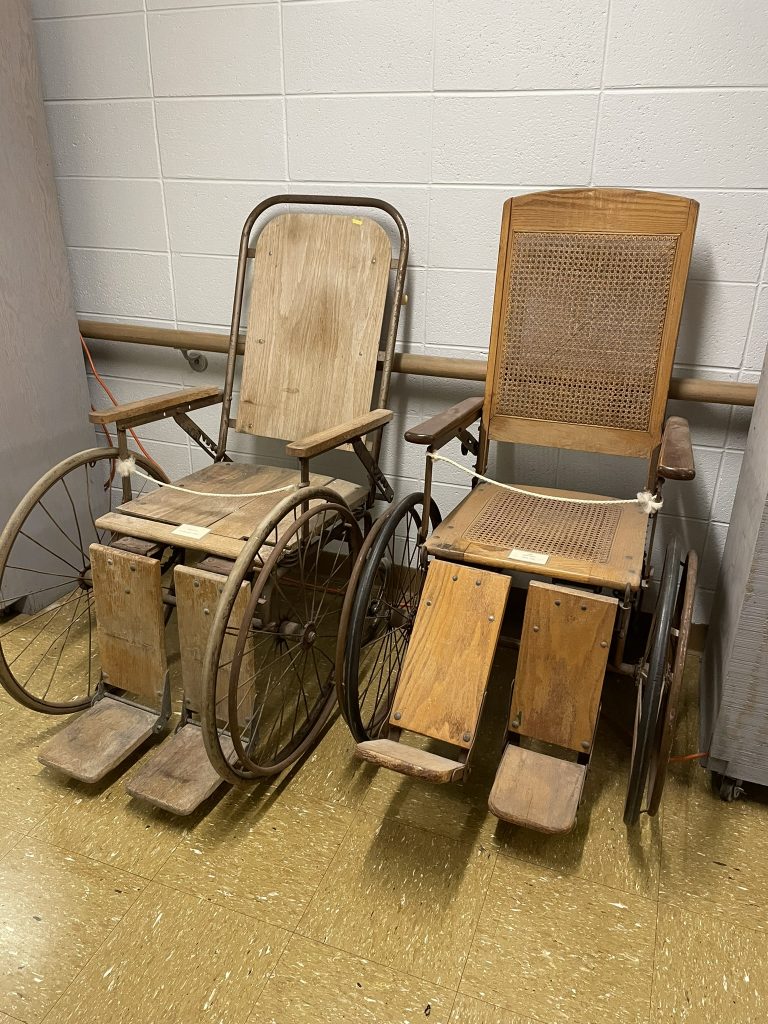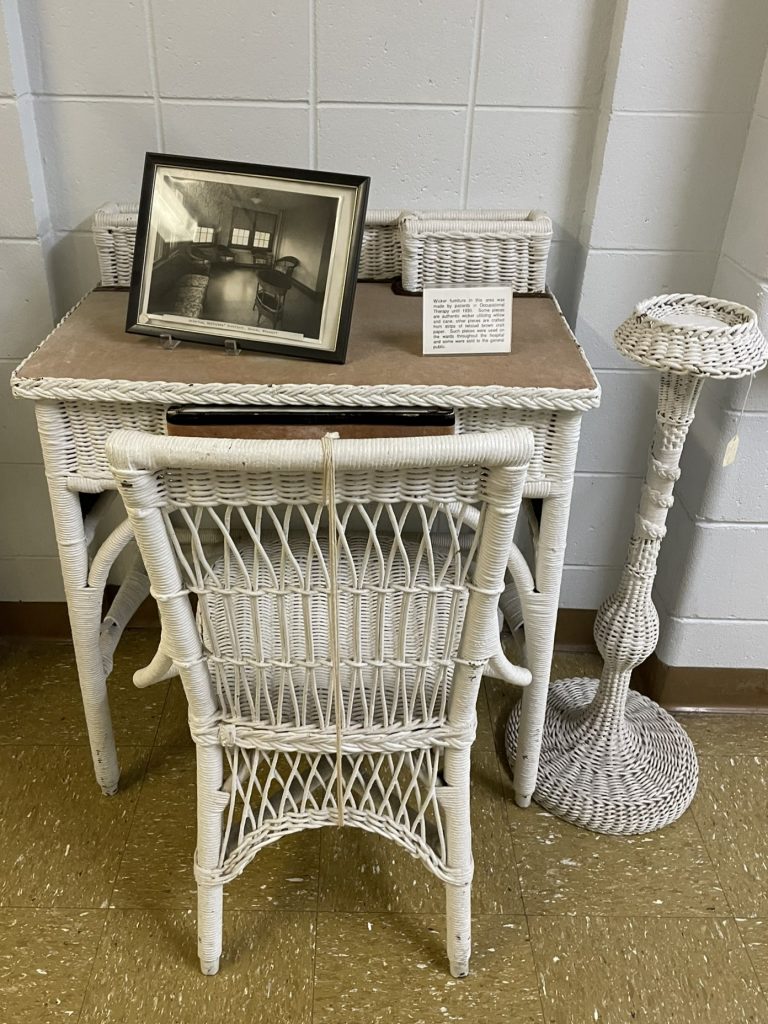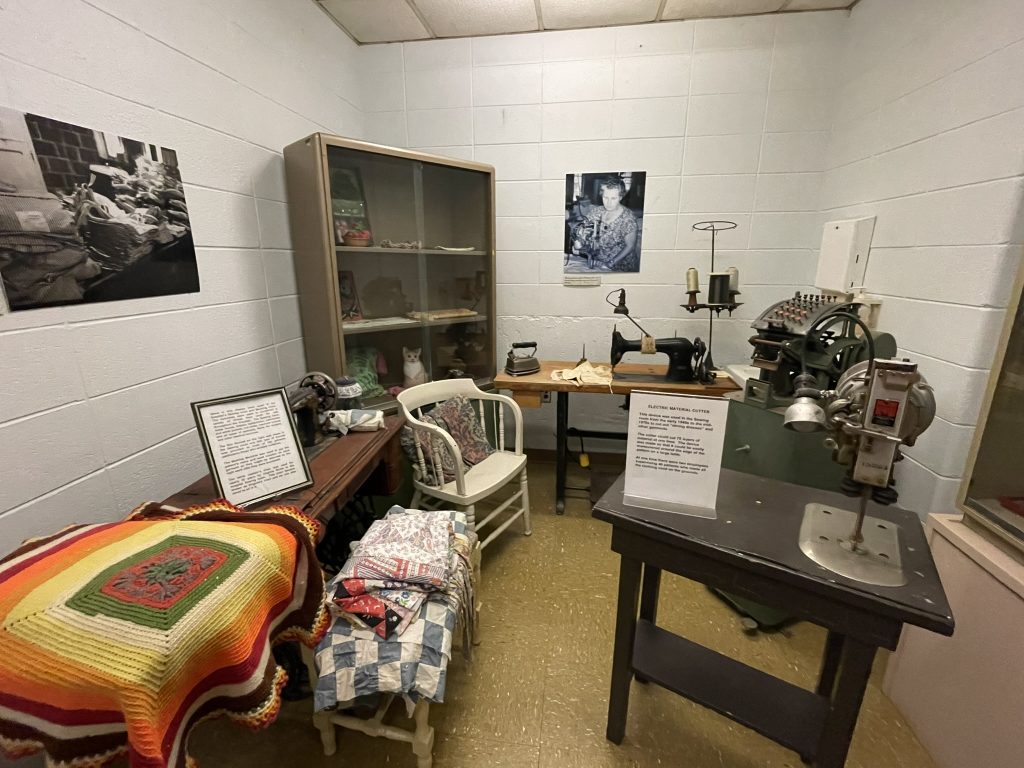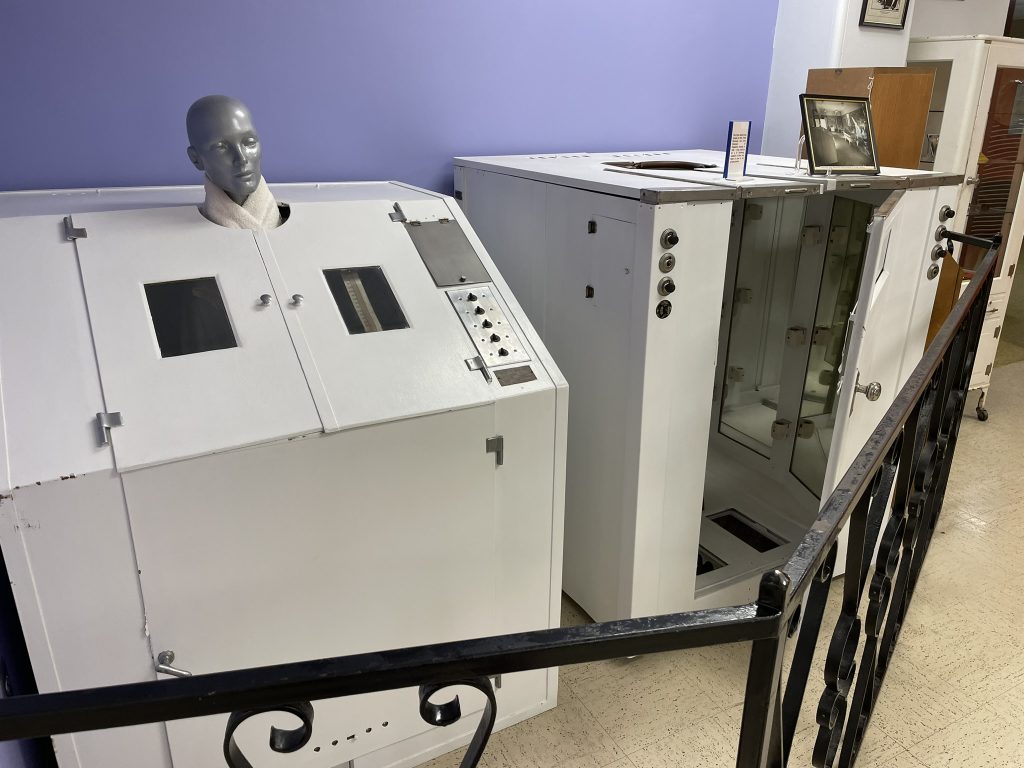The Glore Psychiatric Museum in St. Joseph, Missouri is creepy, but in a good way. The museum covers three large floors and many years of mental health treatment and history.
The focus is on the adjacent former state mental hospital, State Lunatic Asylum No. 2, which opened in 1874 with 275 patients – already overcrowded, as it was intended for 250.
In the late 1800s, additional space was added on, and by the 1950s, the population had grown to nearly 3,000 patients.
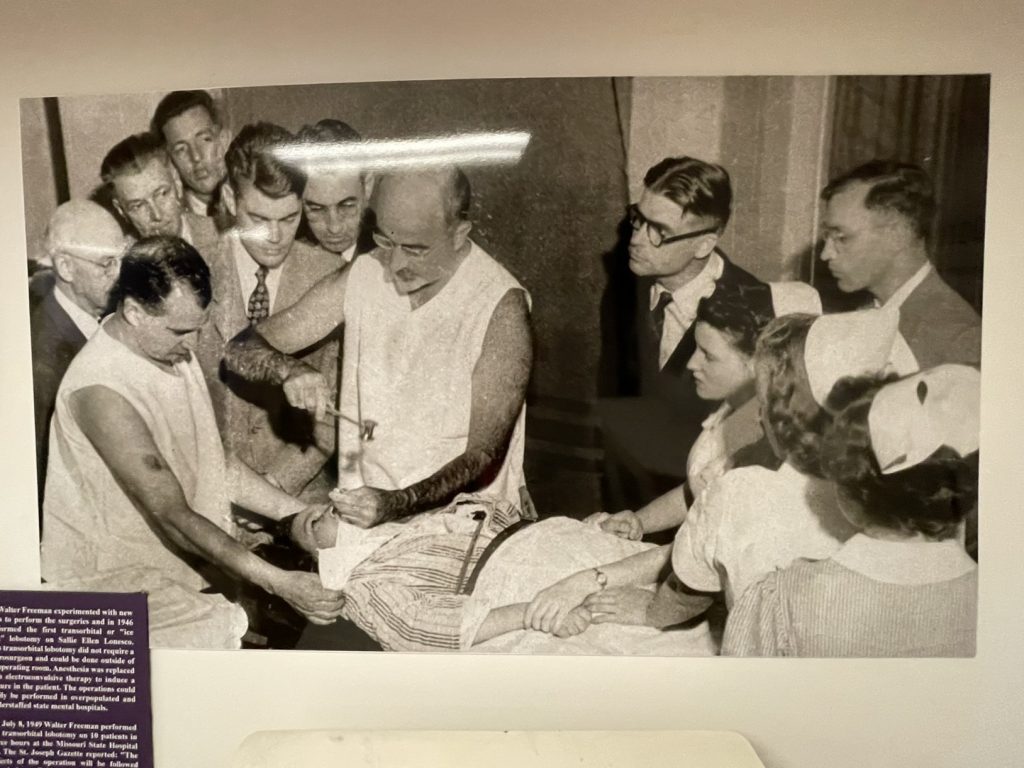
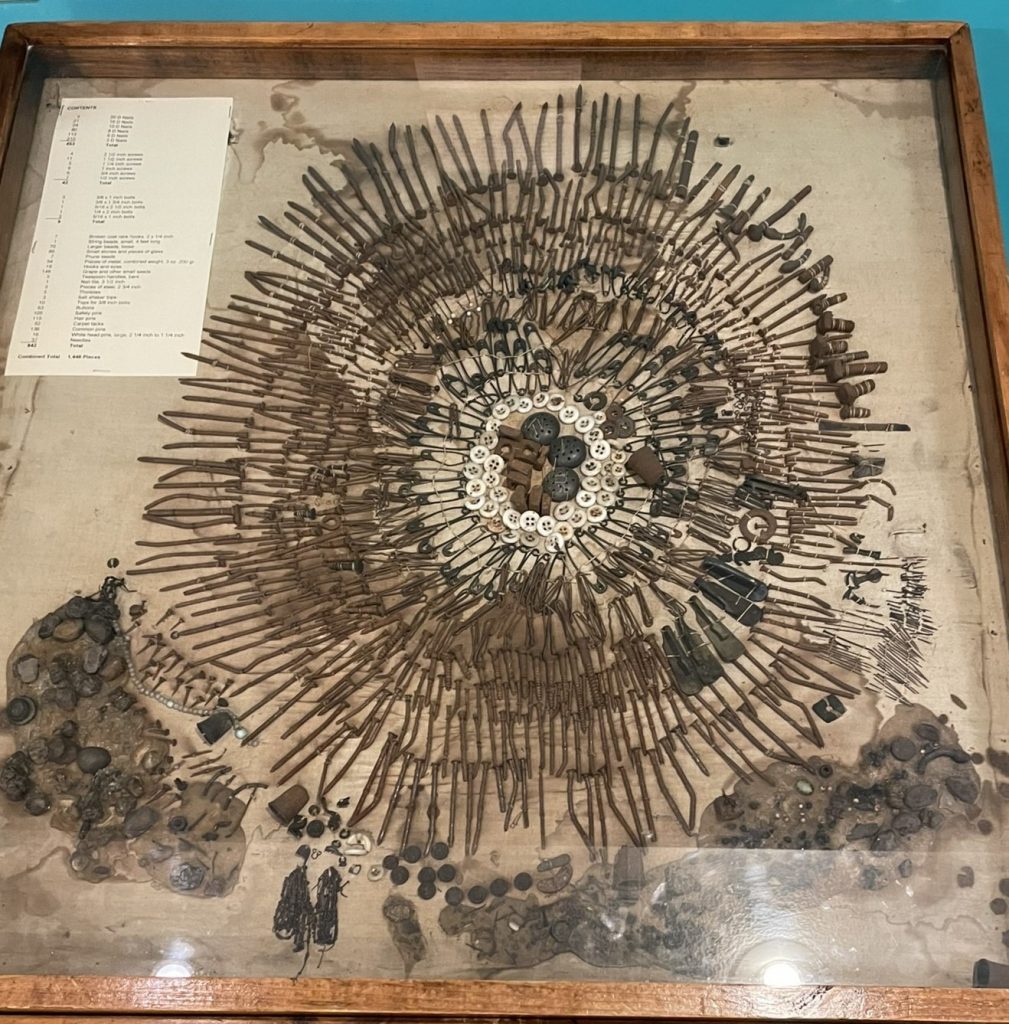
In the 1990s the building was repurposed as a state prison, with a new psychiatric center opening across the street (though hosting only 108 beds). The museum today is housed in what was the former surgery and out patient building of the old hospital.
The museum collection began in 1966 when an employee of the Missouri Department of Mental Health, George Glore, who with the help of patients built models of primitive mental health treatment devices for Mental Health Awareness Week.
Over the following decades it grew to include artifacts from the hospital and patients – like literally from the patients – one exhibit is of the 453 nails that the patient ingested!

Also included in the admission are the Black Archives, Doll, Archeology, and Native American museums. We went through this at a good clip, as they were not of much interest and paled in comparison to the Psychiatric Museum.
The cover photo is the hospital’s physical therapy room – in use until 1997!
